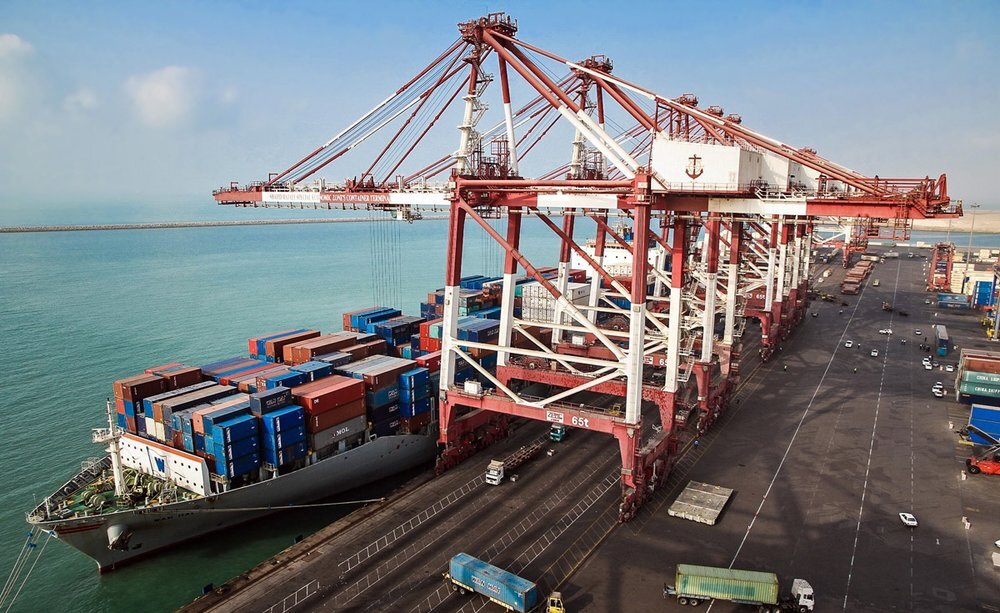
Iranian ports’ capacity to hit 280m tons by August

Mohammad Rastad put the current loading and unloading capacity of the country’s ports at 250 million tons, IRIB reported.
“We have signed 300 contracts with the private sector for conducting development projects including the construction of structures, equipment, and even infrastructure in ports,” Rastad said.
According to the official the private sector has currently invested over 160 trillion rials (about $3.8 billion) in the country’s ports.
Mentioning the restrictions created by the U.S. sanctions in the country’s ports and maritime activities, the official said: “In all areas which were affected by the U.S. sanctions we tried to rely on domestic capacities and managed to keep the ports active and the country’s imports and exports afloat.”
The capacity, infrastructure, and equipment of the ports have made it possible for them to be able to load and unload goods in accordance with international standards, he stressed.
“For all kinds of goods and all types of vessels, including light to heavy goods and also super-sized commodities and vessels, there are berths and special terminals in the country that can provide the necessary services,” Rastad added.
The official put the total length of the Iranian port wharves at 39 kilometers, saying that this has made it possible for different types of ships and vessels to be able to dock and load or unload their cargoes.
“Today, we have no problems regarding the loading and unloading of basic goods, bulk goods, and containers in the country’s ports, and the commodity owners are not obliged to pay demurrage charges (damages for delayed unloading and loading) to ships because of port operations, and this shows how standard the Iranian ports are,” the PMO head added.
Over the past eight years, the capacity of Iranian ports has increased by more than 80 million tons, which means on average every year 10 million tons have been added to the capacity of the country’s southern and northern ports.


Trump weighs using $2 billion in CHIPS Act funding for critical minerals

Codelco cuts 2025 copper forecast after El Teniente mine collapse

Electra converts debt, launches $30M raise to jumpstart stalled cobalt refinery

Barrick’s Reko Diq in line for $410M ADB backing

Abcourt readies Sleeping Giant mill to pour first gold since 2014

Nevada army depot to serve as base for first US strategic minerals stockpile

SQM boosts lithium supply plans as prices flick higher

Viridis unveils 200Mt initial reserve for Brazil rare earth project

Tailings could meet much of US critical mineral demand – study

Kyrgyzstan kicks off underground gold mining at Kumtor

Kyrgyzstan kicks off underground gold mining at Kumtor

KoBold Metals granted lithium exploration rights in Congo

Freeport Indonesia to wrap up Gresik plant repairs by early September

Energy Fuels soars on Vulcan Elements partnership

Northern Dynasty sticks to proposal in battle to lift Pebble mine veto

Giustra-backed mining firm teams up with informal miners in Colombia

Critical Metals signs agreement to supply rare earth to US government-funded facility

China extends rare earth controls to imported material

Galan Lithium proceeds with $13M financing for Argentina project

Kyrgyzstan kicks off underground gold mining at Kumtor

Freeport Indonesia to wrap up Gresik plant repairs by early September

Energy Fuels soars on Vulcan Elements partnership

Northern Dynasty sticks to proposal in battle to lift Pebble mine veto

Giustra-backed mining firm teams up with informal miners in Colombia

Critical Metals signs agreement to supply rare earth to US government-funded facility

China extends rare earth controls to imported material

Galan Lithium proceeds with $13M financing for Argentina project

Silver price touches $39 as market weighs rate cut outlook

















